If you’re looking for procurement automation software, chances are you already understand the basics—purchase order (PO) creation, vendor records, and approval flows.
But not every tool that offers these features truly solves the bottlenecks it is meant to address. Just because a tool digitizes a few steps does not mean it eliminates manual work, follow-ups, or policy gaps.
Many procurement tools still rely on email approvals, disconnected forms, and shallow integrations, leaving teams to do heavy lifting behind the scenes.
Procurement automation platforms go a step further—they structure the process from intake to payment, route requests, enforce policies, and sync data across systems without extra effort.
The result is not just a digital procurement process, but a scalable, dependable one that reduces risk and friction as your business grows.
So, in this blog post, we’ll walk through a list of top procurement automation platforms you can consider if your current setup is slowing down your team.
Features to Look for in Procurement Automation Software
How exactly does automation compare to what most companies are already using?
Procurement processes often start out simple—managed through spreadsheets, emails, or basic tools. But as businesses grow, so does the complexity. More requests, more vendors, more spend categories—and more room for things to slip through the cracks. That is where automation becomes not just helpful, but necessary.
Here’s a breakdown of how manual, simple procurement software and procurement automation software differ across key parts of the procurement process:
Comparing Top Procurement Automation Tools
Many procurement automation tools offer similar features—intake forms, approval flows, ERP sync, and matching. But the real difference lies in how deeply and flexibly they handle each of these steps.
Some tools are built for finance-first teams needing control and speed, while others serve global enterprises with layered compliance needs.
Here is a feature-by-feature comparison of leading platforms to help you understand how they differ in approach, coverage, and fit.
1. Pluto
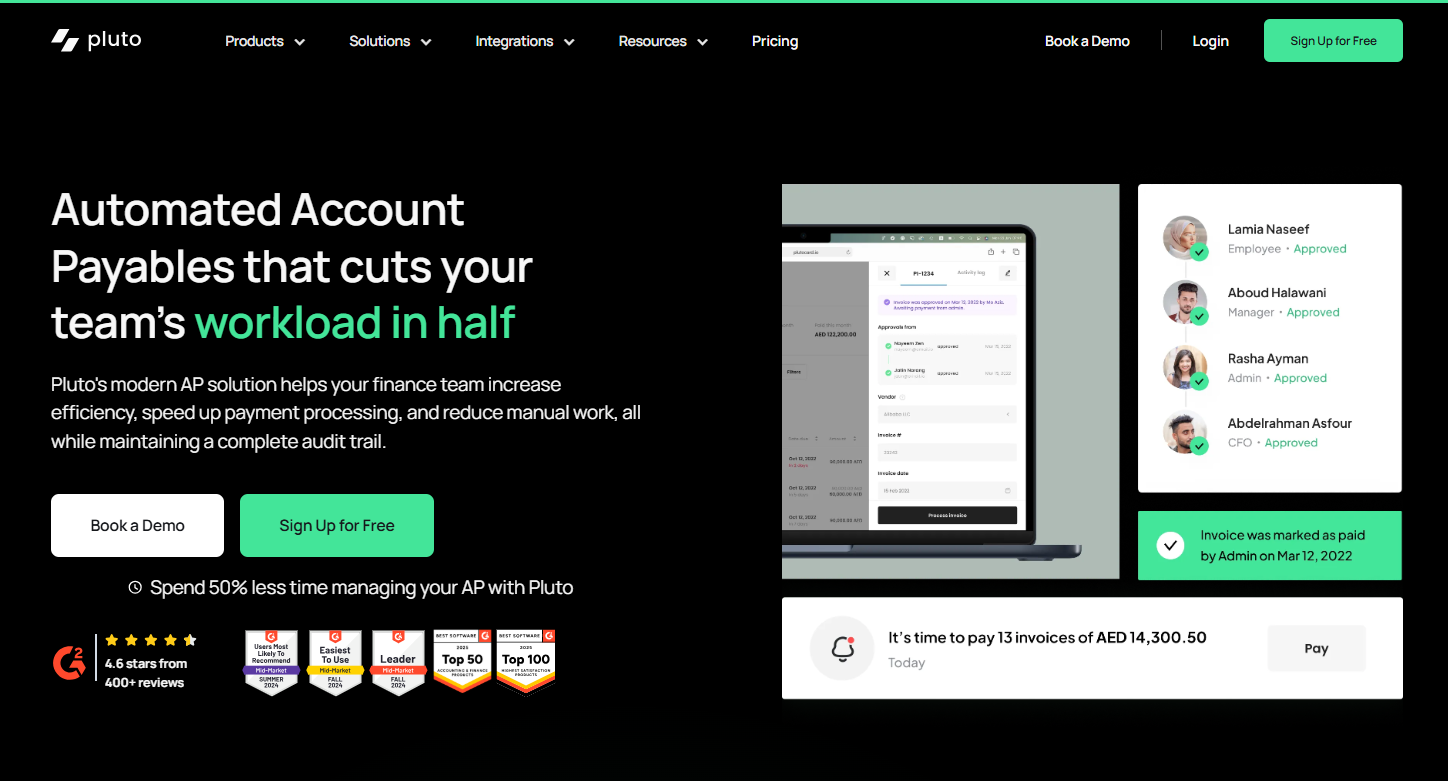
Pluto is a finance-led procurement automation platform built for speed, control, and card-based operational spend. It simplifies procurement without the heavy overhead of legacy tools.
Strengths
- Designed for lean teams that want control without complexity
- Great user interface for fast approvals and tracking across finance and operations
- Balances policy enforcement with usability—minimal training needed
- Particularly good at managing SaaS, marketing, and ad-hoc vendor requests
Best suited for:
Modern finance and procurement teams that need to unify request-to-approval workflows across departments while keeping core ERP processes intact.
2. Zip
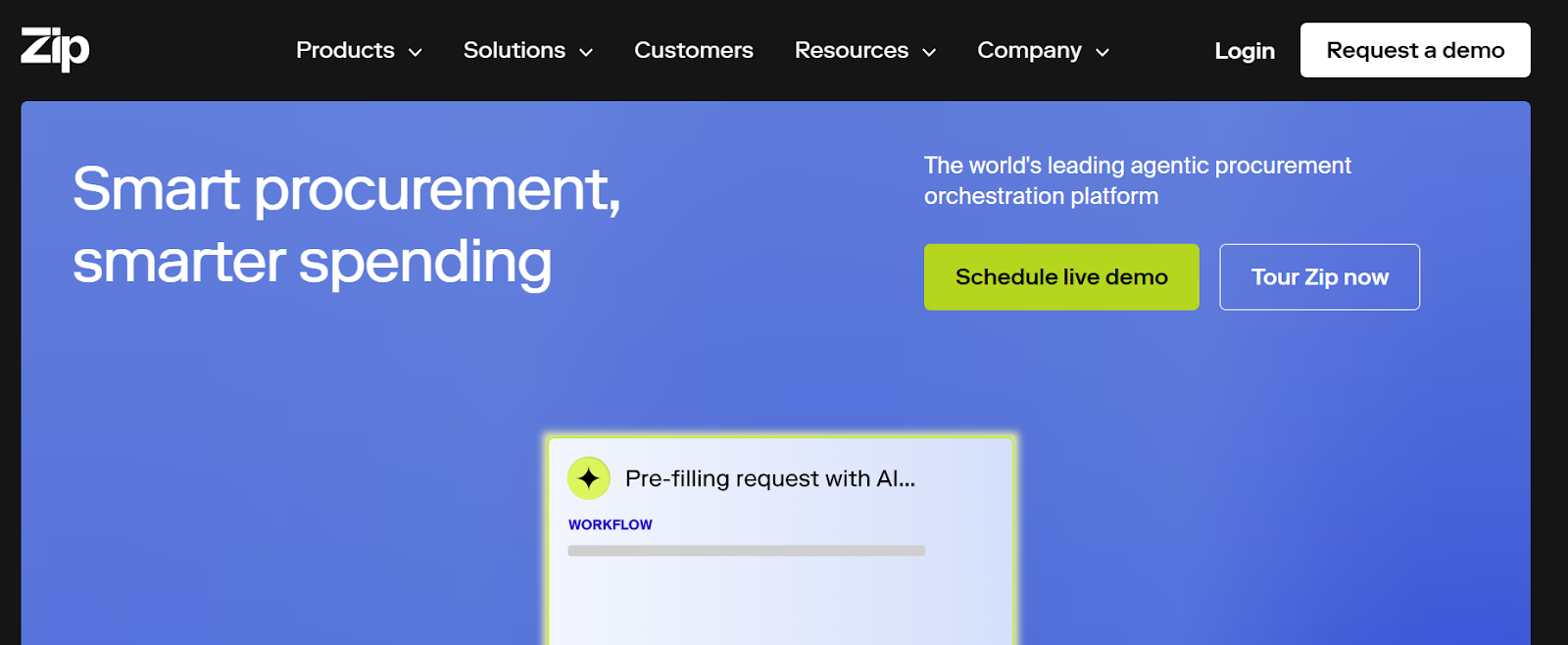
Zip is an intake-to-pay platform that unifies procurement, finance, and legal processes in one central workflow. It’s designed to sit on top of your ERP and handle all types of business requests—not just procurement.
Strengths
- Highly customizable intake workflows across departments
- Deep vendor onboarding with automated document collection
- Dynamic, multi-stakeholder approvals with audit trail
- Seamless ERP integrations (Netsuite, SAP, Oracle, etc.)
Best suited for:
Mid-sized to large companies managing complex approvals across procurement, finance, IT, and legal, with growing needs for visibility, compliance, and cross-functional coordination.
3. Ramp
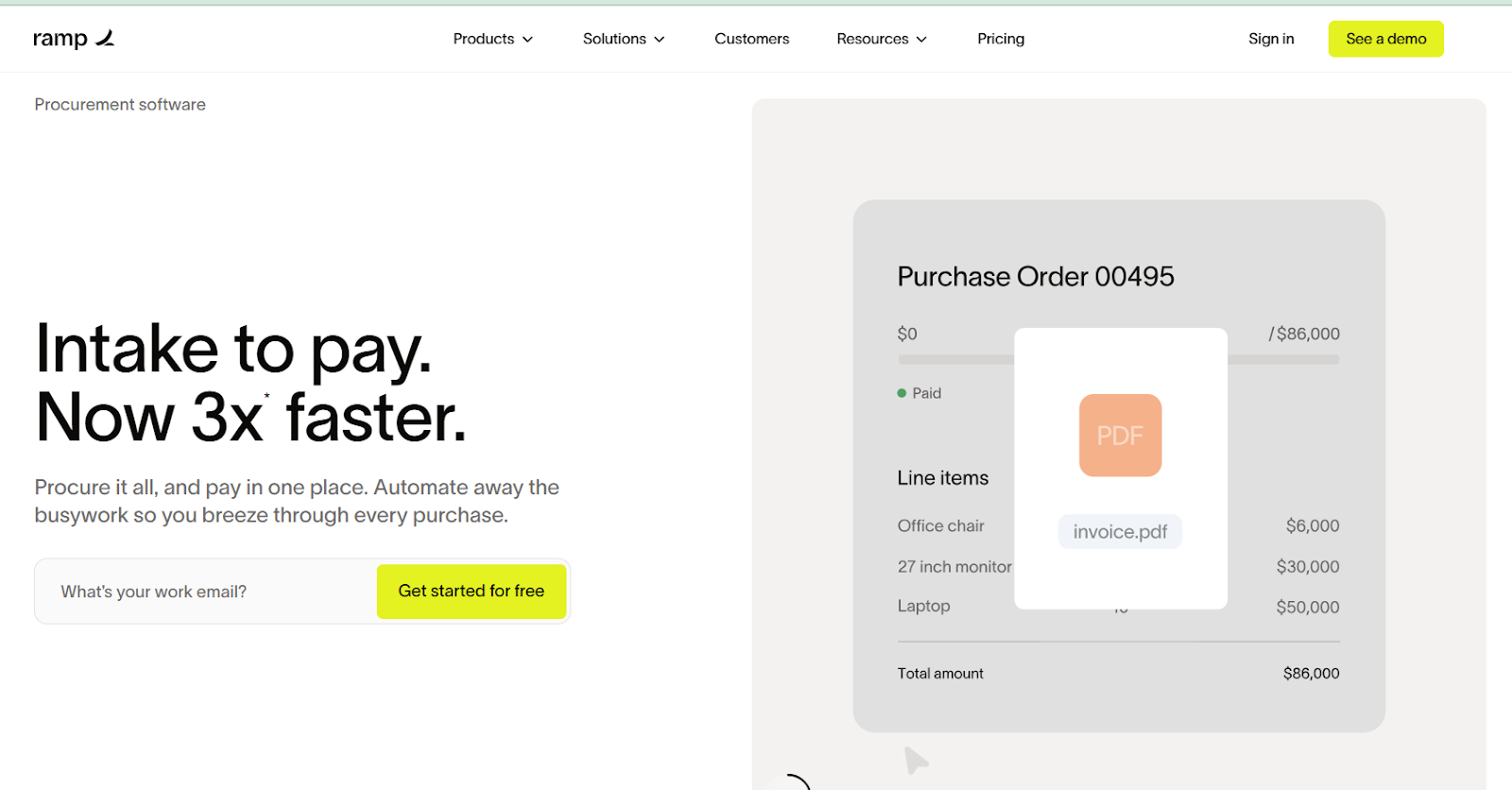
Ramp is primarily an expense management platform with procurement capabilities layered in. It’s designed for fast-moving teams that prioritize speed, visibility, and spend controls.
Strengths
- Easy for employees to adopt with minimal training or change management
- Especially strong for SaaS tracking, card-based spend, and team budgets
- Helpful automation around renewal alerts and policy-based routing
- Works well for teams that want to combine cards, reimbursements, and light procurement
Best suited for:
Finance or operations teams that don’t need deep procurement controls but want visibility and automation for recurring software and team expenses.
4. Tipalti
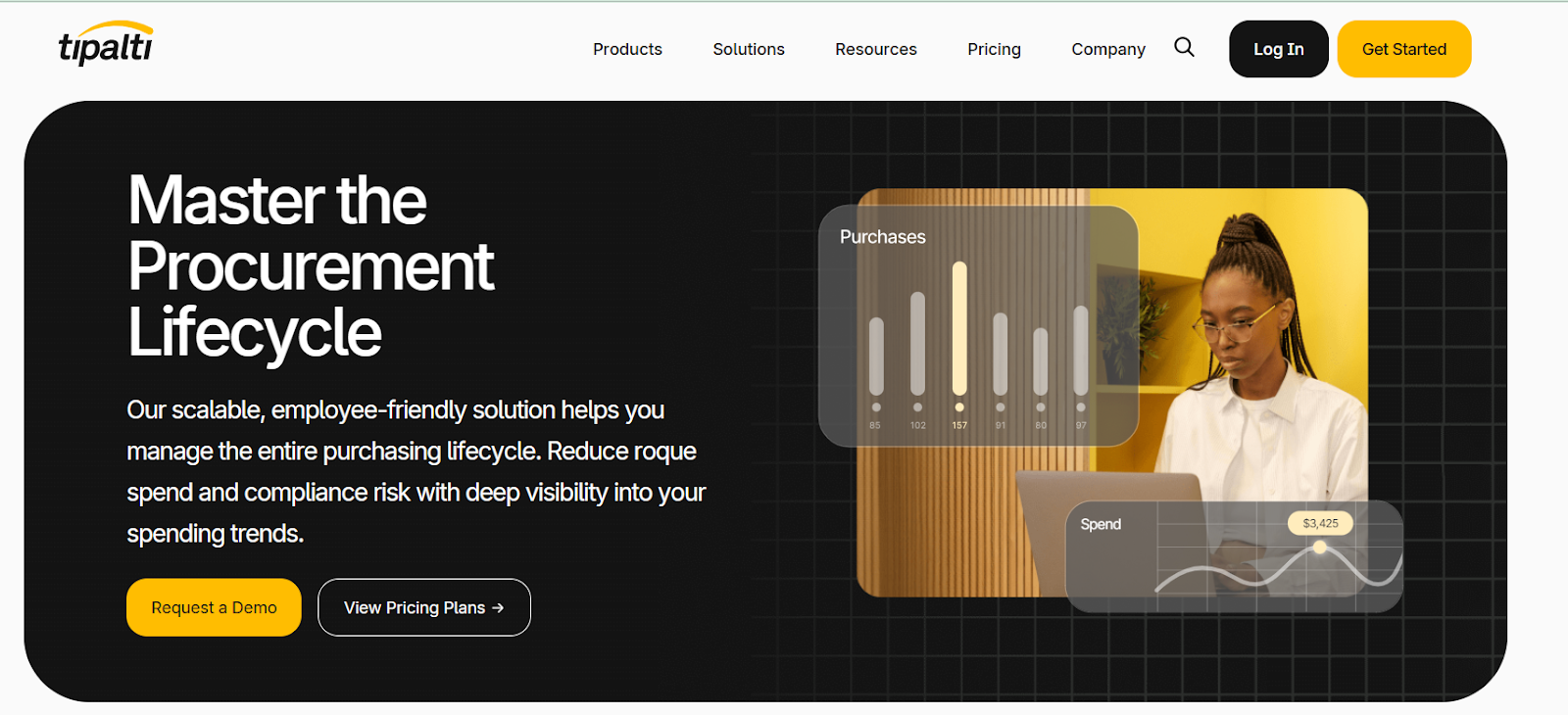
Tipalti is an AP-first platform with procurement capabilities built for finance teams managing high volumes of vendor payments and global compliance requirements.
Strengths
- Excellent for handling tax, AML, and international vendor compliance
- Built-in controls for payment approvals, fraud checks, and onboarding
- Tight coupling between procurement and payables—fewer handoffs
- Works particularly well when finance wants to own procurement execution
Best suited for:
Finance-led companies that care most about secure global payouts, supplier compliance, and operational efficiency between procurement and AP.
5. Coupa
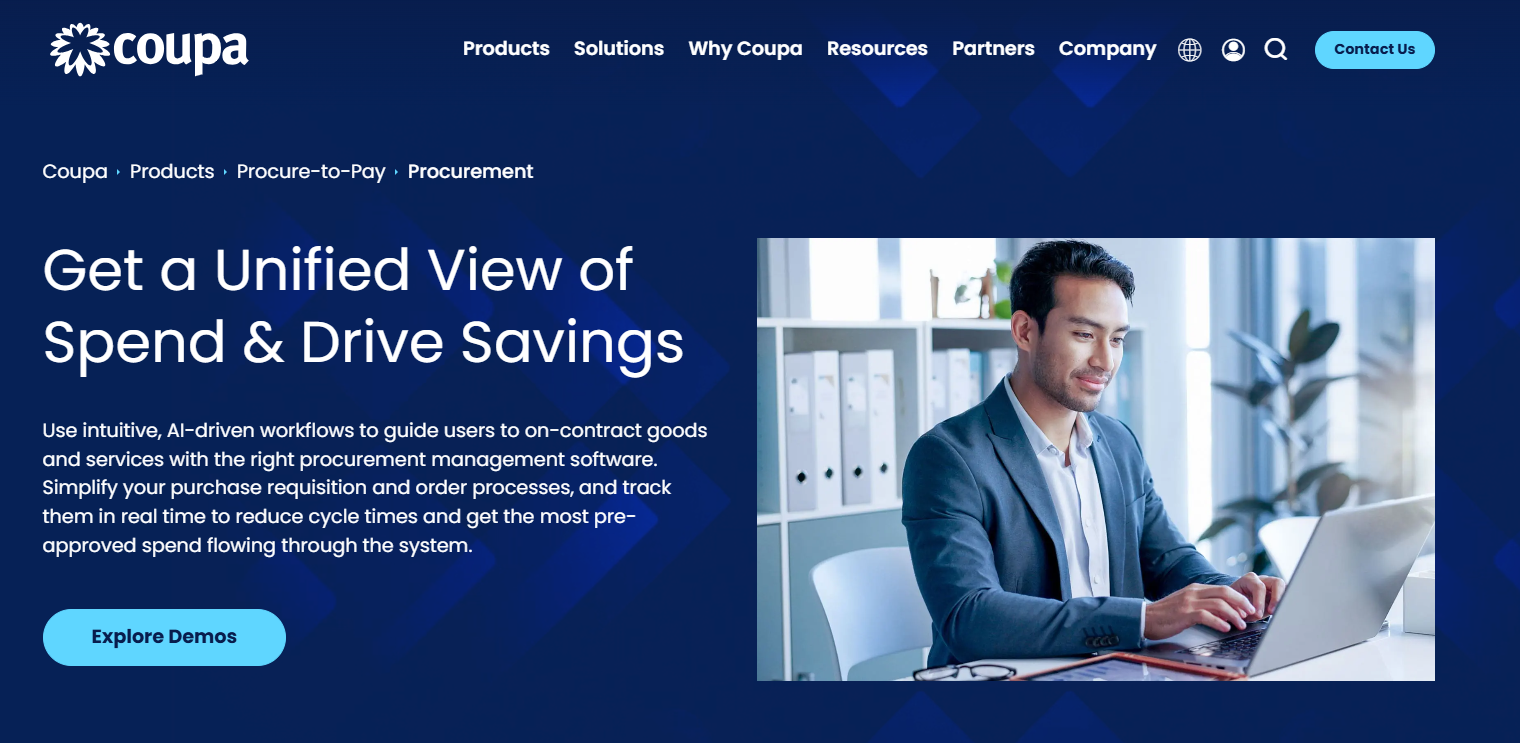
Coupa is an enterprise-grade procure-to-pay suite known for strong governance, supplier collaboration, and detailed spend analytics.
Strengths
- Extremely customizable to fit enterprise workflows and controls
- Wide vendor marketplace and supplier collaboration capabilities
- Visibility into contract, budget, and ESG goals during procurement
- Deeply embedded insights for procurement leaders to find savings
Best suited for:
Enterprises with dedicated procurement teams, centralized controls, and a need to manage complex sourcing and compliance across business units.
6. SAP Ariba

SAP Ariba is an enterprise-grade procurement platform tightly integrated with SAP’s ERP ecosystem, designed to serve large organizations with complex global supply chains and sourcing needs.
Strengths
- Integrated with sourcing, contracts, and supply chain risk management
- Ideal for multi-region companies needing formalized workflows and data governance
- Strong supplier portal with visibility into status, documents, and risk
- Native fit for SAP ERP customers looking for full lifecycle procurement
Best suited for:
Global enterprises that already rely on SAP and need highly structured, compliant, and interconnected procurement and sourcing processes.
Do Not Overbuild—Automate What Matters Most
The right procurement tool depends less on what it offers, and more on what your team actually needs. That is why it is important to start with your own friction points.
Are approvals getting stuck?
Are vendor records a mess?
Is your finance team manually matching invoices and POs?
These are signs that your current setup—whether manual or tool-based—is not scaling with your business.
The right procurement automation software should align with how your team works, not force you to redesign everything around the tool.
Tools like Pluto or Ramp suit lean teams that want quick control over spend. Platforms like Zip or Coupa are better suited for cross-functional coordination and scale.
Understand your pain points, define your priorities, and choose the platform that fits—not just today, but as your business grows.
Disclaimer: The comparisons and rankings of procurement software competitors in this article are based primarily on reviews found online. While we strive to provide accurate and up-to-date information, these reviews are subjective and reflect the opinions of the users who posted them. The information presented is intended for general informational purposes and should not be considered as a definitive guide for choosing a software provider. We encourage readers to conduct their own research and consider their specific needs before making a decision.
.png)


.png)















